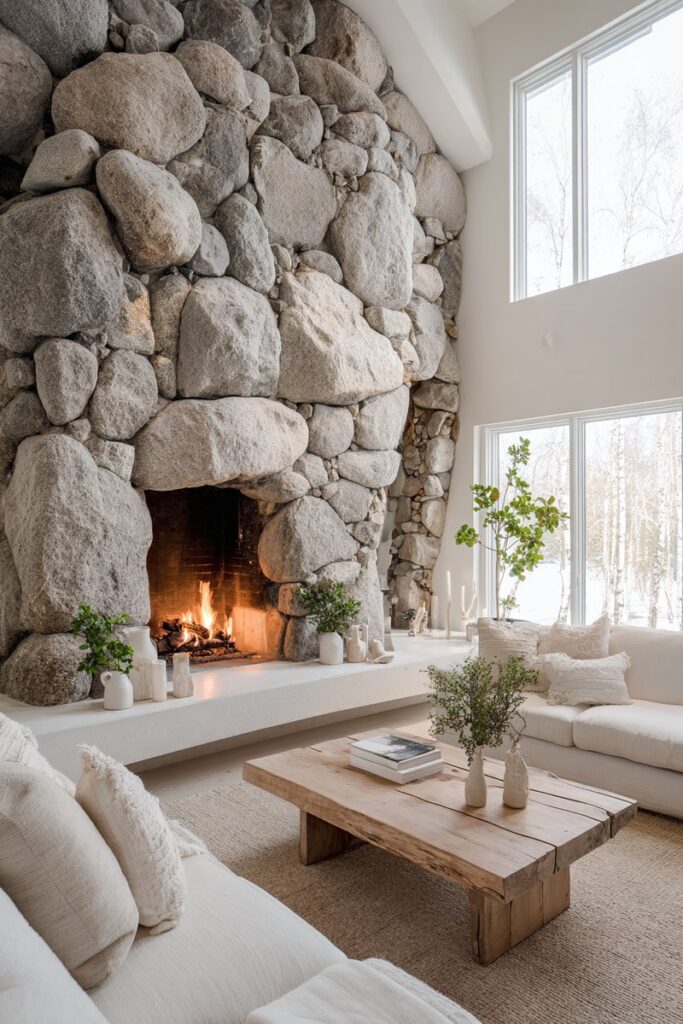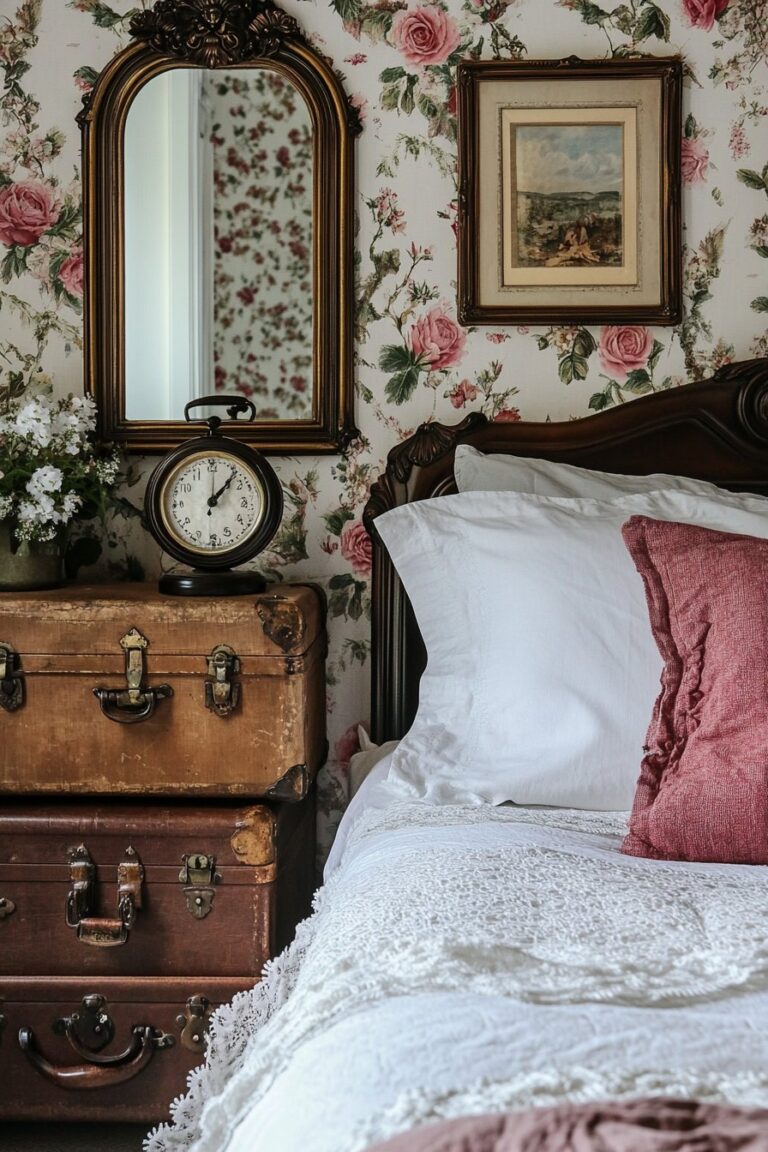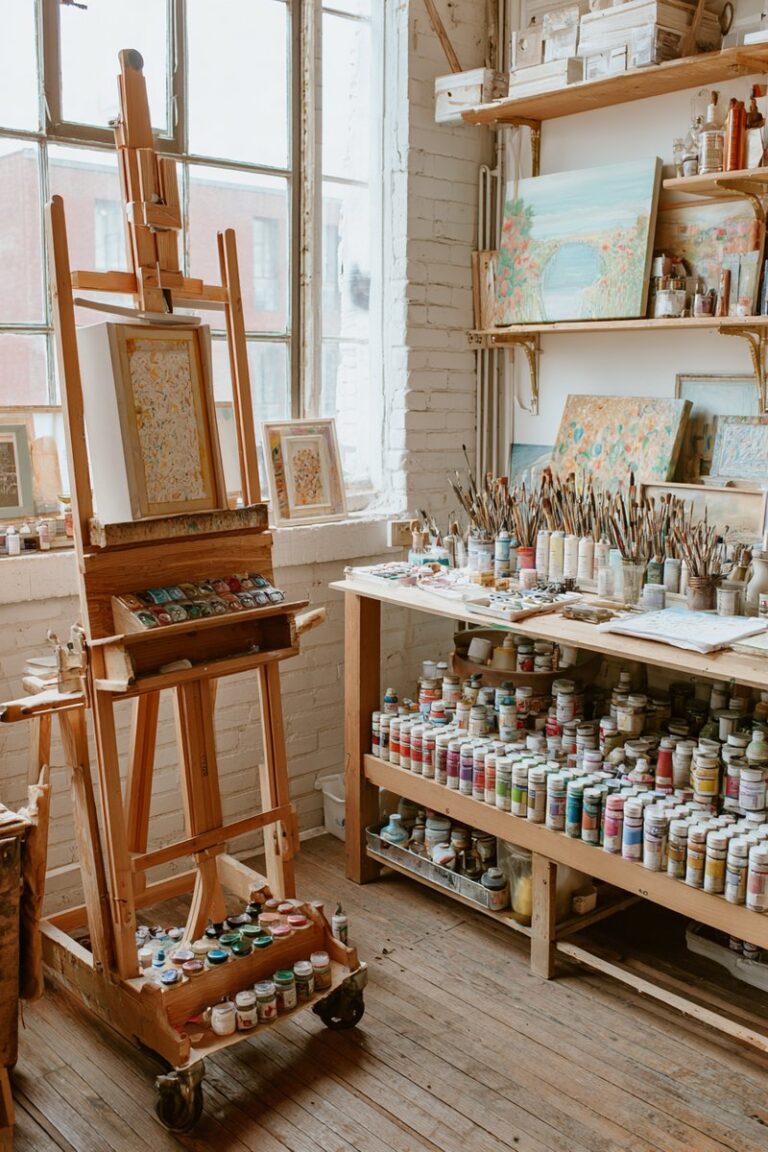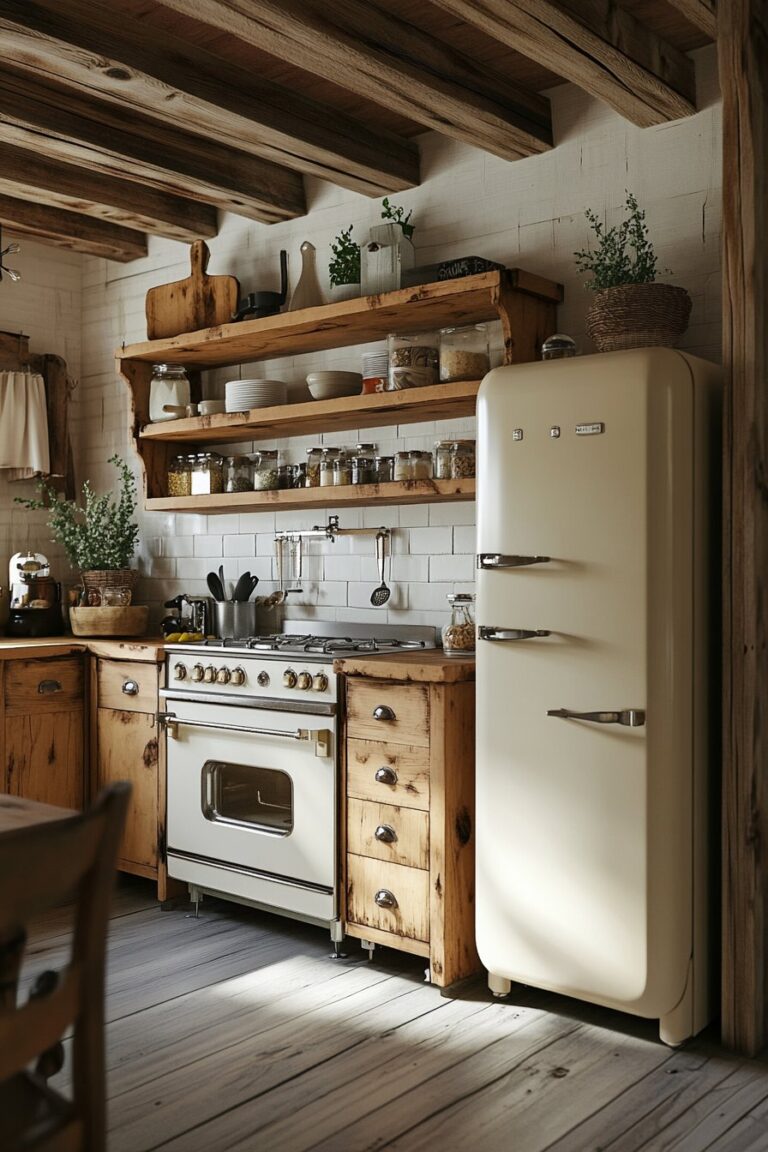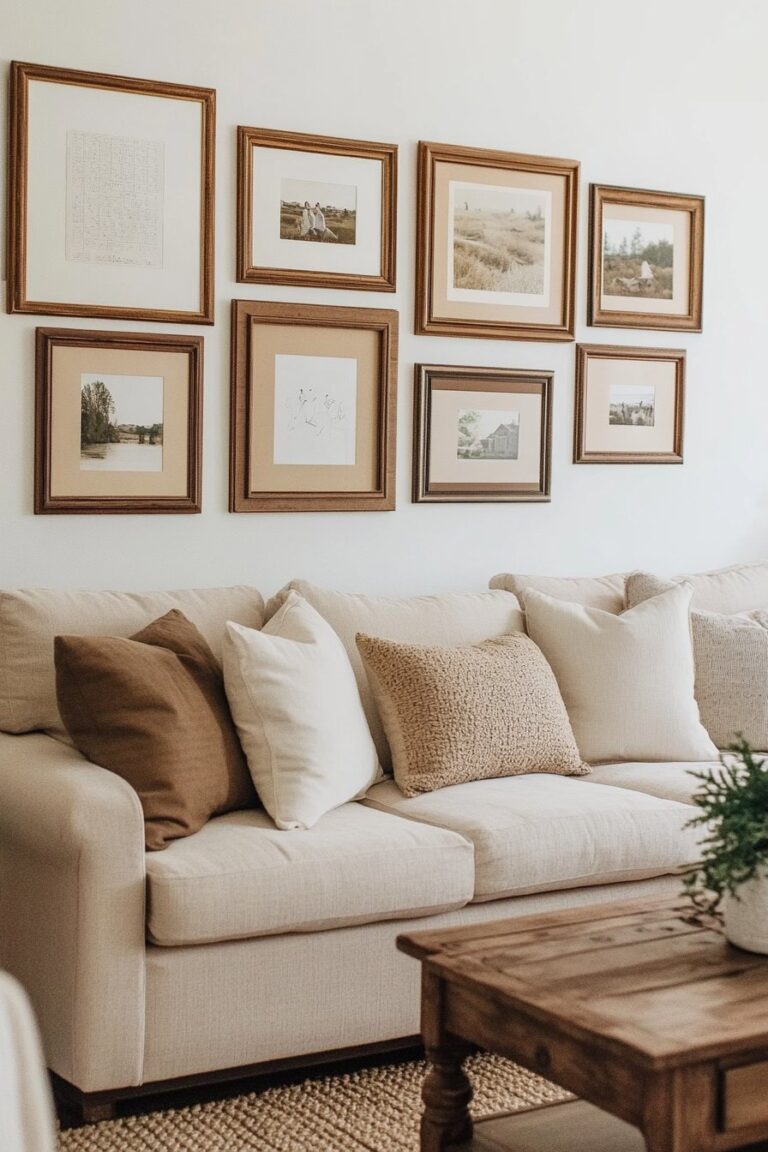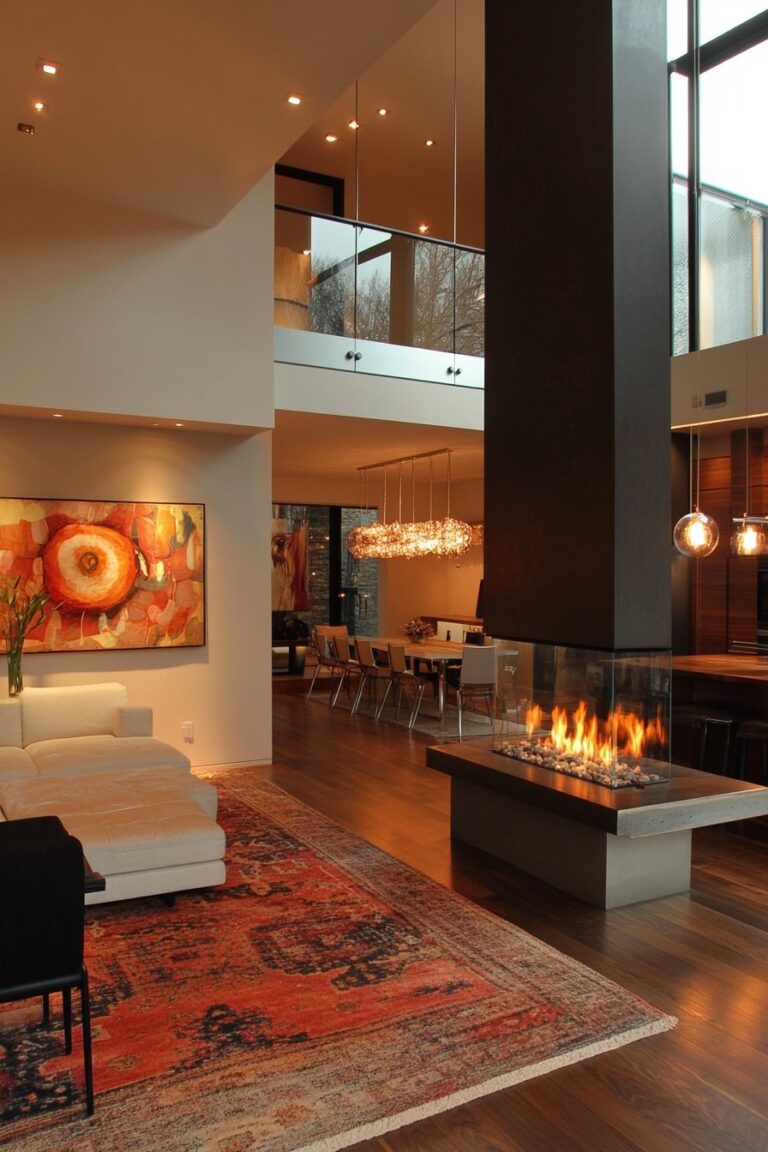Imagine a chilly evening, the soft glow of firelight dancing across your living room, casting a warm embrace. A fireplace isn’t just a heat source; it’s the heart of the home, a magnetic focal point that draws people in. But how do you choose a fireplace that reflects your personal style, especially when you’re torn between the clean lines of modern design and the cozy charm of rustic aesthetics? Discovering the perfect blend is key to creating a truly inviting space. We’ve curated 15 Modern & Rustic Living Room Fireplace Ideas for Every Style, offering inspiration to transform your living area into a sanctuary of warmth and beauty.
In this article, we’ll delve into diverse design concepts, from dramatic floor-to-ceiling stone features to minimalist concrete forms and clever material pairings. You’ll gain insights from interior design experts, explore specific examples that bring these ideas to life, and find practical tips for incorporating these stunning fireplaces into your own home, whether you’re building new or renovating. We’ll cover everything from material choices like natural stone and reclaimed wood to contemporary trends like floating hearths and integrated media walls. By the end, you’ll be equipped with the knowledge and inspiration to choose a living room fireplace that not only heats your space but also elevates its entire look and feel, perfectly balancing modern and rustic elements.
Let’s explore these captivating fireplace possibilities, designed to suit every taste and living situation.
1. Floor-to-Ceiling Natural Stone Majesty


Nothing embodies rustic charm quite like a towering fireplace crafted from natural stone. Imagine irregular fieldstone or rugged river rock extending from hearth to ceiling. This creates an immediate, undeniable focal point, celebrating the raw beauty of nature.
According to Sarah Chen, a principal designer at Chen & Associates Interior Design, “A floor-to-ceiling stone fireplace provides incredible texture and presence. It grounds the room, often dictating the overall material palette. While inherently rustic, you can modernize it with a clean-lined mantel or a linear gas insert.”
Consider using local stone for authenticity. For instance, a home in the mountains might use native granite, while a coastal property could incorporate bluestone. Practical tip: Ensure the stone is properly sealed, especially if using a wood-burning insert, to protect against soot and stains over time. Transitioning from this grand statement, let’s consider a completely different aesthetic.
2. Sleek, Minimalist Concrete Form

At the other end of the spectrum is the minimalist concrete fireplace. This option speaks volumes through its understated simplicity and clean lines. Cast concrete offers a smooth, monolithic appearance that fits seamlessly into modern and industrial spaces.
Design consultant Mark Jenkins notes, “Concrete is incredibly versatile. It can be cast in situ for a truly custom, seamless look, or precast panels can be used for a faster installation. The raw, unpolished finish leans modern, but a warmer aggregate or slightly textured finish can hint at rustic origins.”
Picture a geometric concrete block structure with a simple, cut-out opening for the firebox, perhaps a sleek electric model. Practical tip: Concrete can feel cool; pairing it with warmer materials like a rich wood floor or plush textiles helps balance the aesthetic and enhances that cozy feeling. Next, we explore how classic materials can be reinvented.
3. Classic White-Painted Brick Charm

While traditional brick is often associated with rustic or colonial styles, painting it white instantly updates its look, creating a light, airy feel that bridges the gap between classic and contemporary. This approach maintains the texture of the brick while offering a clean, modern color.
Interior stylist Emily Carter explains, “Painted brick softens the visual impact of the material’s pattern while retaining its character. White brick feels fresh and bright, making the fireplace less imposing and more integrated into a modern farmhouse or transitional living room design.”
Think about a standard red brick fireplace that feels dated. A simple coat of white paint can dramatically change its appearance. Practical tip: Use a high-quality, heat-resistant paint suitable for masonry. Clean the brick thoroughly before painting for the best adhesion. Following this refreshed classic, let’s consider incorporating natural wood.
4. Reclaimed Wood Mantel with Modern Insert

This is a prime example of blending styles effectively. A beautiful, character-rich reclaimed wood beam serves as a mantelpiece above a contemporary fireplace insert – perhaps a sleek, low-profile gas or electric unit. The juxtaposition is striking and creates a unique visual story.
Architectural salvage expert Ben Harris shares, “Every piece of reclaimed wood has a history. Using it for a mantel brings warmth, texture, and a narrative into the room. Paired with a modern firebox, it highlights the beauty of both old and new.”
Imagine a rough-hewn oak beam, weathered by time, positioned above a sophisticated black steel fireplace opening. Practical tip: Ensure reclaimed wood is properly treated for insects and moisture before installation. Secure the mantel firmly into structural supports. Speaking of modern elements, let’s look at hearth design.
5. Floating Hearth with Geometric Tile Surround

A floating hearth, cantilevered from the wall, is a quintessential modern feature. When combined with a fireplace surround clad in striking geometric tile, it creates a dynamic and visually interesting composition. The tile can introduce color, pattern, or sophisticated texture.
According to design blogger and tile enthusiast, Anya Sharma, “Geometric tiles add a layer of artistry and modernity to a fireplace. They can be subtle, like a textured hexagonal, or bold, like a colorful graphic pattern. A floating hearth complements this by keeping the look clean and airy.”
Picture a fireplace wall clad in large format, dark grey tile with a white grout geometric pattern, and a concrete or stone hearth projecting neatly from the wall. Practical tip: For a floating hearth, consult a structural engineer to ensure it is safely supported. Grout choice significantly impacts the tile’s final look. This clean geometry contrasts nicely with raw materials.
6. Industrial Steel Plate Surround

Embrace an industrial-modern vibe with a fireplace surround made from raw or blackened steel plating. This material is durable, visually impactful, and adds a touch of urban grit. Steel can be left raw to develop a patina or treated for a consistent, dark finish.
Metal fabricator and designer, Jake Riley, states, “Steel is incredibly strong and can be manipulated into precise forms. A steel plate surround offers a bold, industrial aesthetic. It works particularly well with concrete floors and exposed ductwork but can also be softened by incorporating warm wood furniture.”
Visualize a clean, rectangular steel plate framing the firebox opening, extending floor-to-ceiling or just around the insert. Practical tip: Consider the weight and heat expansion of steel when designing and installing; proper ventilation and clearances are crucial. This raw material look leads us to another textured option.
7. Integrated Media Wall with Linear Fireplace

A popular modern solution integrates the fireplace seamlessly into a media wall that houses the television, speakers, and storage. A long, linear gas or electric fireplace often sits beneath the TV, creating a streamlined, functional focal point.
Home technology integration specialist, David Lee, explains, “Clients increasingly want their fireplace and media center to coexist harmoniously. A linear electric fireplace is ideal here because it requires no venting and stays cool to the touch, making it safe below electronics. The clean line integrates beautifully into a built-in unit.”
Think of a custom-built wall unit with shelving, cabinet doors concealing wires, and a horizontal fireplace nestled in the base, topped by a large screen TV. Practical tip: Plan wiring and ventilation routes carefully during the design phase. Use heat-rated materials around the firebox if it produces significant heat. Stepping away from tech integration, let’s look at stacked textures.
8. Stacked Ledger Stone Accent

Ledger stone panels, made from strips of natural stone adhered together, offer a textural, rustic look that’s easier to install than individual stones. Used on a fireplace surround, they create a visually rich surface with depth and variation.
Masonry supplier representative, Maria Rodriguez, notes, “Ledger stone provides a layered, organic look that feels very connected to nature. It comes in various stone types, from slate and quartzite to travertine, offering different colors and textures. While rustic, using it within a clean, defined frame keeps it feeling current.”
Picture a fireplace wall clad in grey or brown ledger stone, perhaps with a simple floating wood mantel. Practical tip: Ensure the substrate is properly prepared for the weight of the stone. Use a suitable adhesive and grout designed for natural stone. From this textured surface, we move to a classic farmhouse element.
9. Shiplap Above Fireplace with Simple Wood Beam Mantel

The modern farmhouse aesthetic often features shiplap paneling. Applying shiplap to the wall above the fireplace, combined with a robust yet simple wood beam mantel, creates a look that is both cozy and clean. This balances rustic materials with a structured, modern application.
DIY and home decor influencer, Joanna Reed, says, “Shiplap adds instant texture and a touch of coastal or farmhouse charm. Above a fireplace, it provides a lovely backdrop for decor. A substantial wood beam contrasts beautifully with the linear shiplap, grounding the design.”
Visualize a white shiplap wall rising above a simple firebox with a chunky, natural wood beam mantelpiece, perhaps adorned with classic candlesticks and greenery. Practical tip: Use fire-rated shiplap alternatives or ensure proper clearance from the heat source, especially with a wood-burning fireplace. Next, let’s consider another metal option.
10. Blackened Steel Box Fireplace

For a bold, contemporary statement, a fireplace designed as a simple, geometric box clad in blackened steel makes a strong impression. This design minimizes visual clutter, focusing attention purely on the form and the fire itself. It works well in minimalist or industrial-inspired spaces.
Architect Peter Kim explains, “A steel box fireplace is about purity of form. Blackened steel is chic and sophisticated, providing a crisp edge. It becomes a sculptural element in the room, especially when wall-mounted or integrated into a custom unit.”
Imagine a cube or rectangle of dark steel projecting slightly from a plain white wall, with the fire visible through a glass front. Practical tip: Blackened steel can show fingerprints; consider a protective coating or choose a finish that minimizes marks. Ensure proper support for wall-mounted units. From minimalist forms, let’s add some color and pattern.
11. Colorful Zellige Tile Surround

Inject personality and handmade charm with a fireplace surround made from zellige tiles. These Moroccan clay tiles, known for their irregular shapes, variations in color, and shimmering glaze, bring warmth, texture, and vibrant character. They can be installed in a solid color or a mosaic.
Tile artisan and importer, Leila Khan, says, “Zellige tiles have an ancient history but feel incredibly modern due to their unique texture and depth of color. Each tile is slightly different, creating a truly artisanal fireplace surround. They add a touch of bohemian or Mediterranean flair to a contemporary space.”
Picture a fireplace opening framed by emerald green zellige tiles, their glossy surface catching the light beautifully. Practical tip: Zellige tiles require specialized installation due to their irregularities; using a skilled tile setter is recommended. Seal the tiles and grout properly. Now, let’s think about flow between spaces.
12. Two-Sided / See-Through Fireplace

A two-sided or ‘see-through’ fireplace is a fantastic modern feature that connects two adjacent rooms or zones within an open-concept living space. It allows the warmth and ambiance of the fire to be enjoyed from multiple vantage points.
Interior designer Sophia Marino notes, “A see-through fireplace is a luxurious architectural element. It serves as a beautiful partition without blocking light or views, maintaining an open feel while providing a visual anchor for both spaces. It works wonderfully between a living room and a dining area or study.”
Envision a clean-lined fireplace structure clad in smooth plaster or stone, with glass on two sides, providing a view of the flames from both your seating area and perhaps a nearby reading nook. Practical tip: Installing a two-sided fireplace is a significant architectural change; consult with a professional to ensure structural integrity and compliance with building codes. From architectural features, back to materials.
13. Oversized Limestone Surround

While stone is often rustic, large format, smooth-cut limestone blocks offer a sophisticated, almost classical take on a stone fireplace. The scale of the blocks adds a sense of grandeur, while the smooth finish and often muted tones feel refined and contemporary.
Quarry owner and stone specialist, Thomas Grant, shares, “Limestone is a timeless material. Using oversized, precisely cut blocks for a fireplace surround gives it weight and importance. It can feel both traditional and modern depending on the cut and finish. A honed finish is popular for a soft, elegant look.”
Imagine a massive fireplace surround built from pale, creamy limestone blocks, perhaps with a simple, clean-lined opening. Practical tip: Limestone is porous and requires sealing to protect against stains. Choose a density suitable for fireplace applications. This timeless material brings us to innovative applications.
14. Vertical Wood Slat Feature Wall with Hidden Fireplace

Create a modern, textured look by cladding a wall with vertical wood slats. The fireplace can be subtly integrated within this feature wall, perhaps with a linear firebox nestled within the slats or a minimalist opening that doesn’t interrupt the vertical lines significantly. This approach focuses on overall wall texture rather than just the fireplace surround.
Architectural millwork specialist, Robert Chen, explains, “Vertical slats add visual rhythm and warmth. Integrating a fireplace into this kind of feature wall makes the fire a part of a larger design element, often making the room feel taller and more dynamic. It’s a sophisticated way to blend function and form.”
Picture a wall covered in warm walnut or white oak slats, with a nearly flush-mounted electric or gas fireplace seemingly emerging from the wood. Practical tip: Ensure proper heat shielding and ventilation are installed behind and around the fireplace insert within the wood structure. Use fire-rated materials where necessary. Finally, let’s consider freestanding options.
15. Freestanding Contemporary Fireplace

Not all fireplaces need to be built into a wall. A sleek, freestanding contemporary fireplace, often made of metal or ceramic, offers flexibility and a sculptural quality. These units can sit in the center of a room or against a wall, becoming a piece of art in themselves.
Product designer for modern heating solutions, Lisa Tran, notes, “Freestanding fireplaces are perfect for spaces where structural changes are difficult or for those who want a fireplace that feels less permanent. They offer incredibly clean designs and are available in gas, wood, or bioethanol options, many of which require minimal or no venting.”
Visualize a conical black metal fireplace standing gracefully in a corner, or a sleek, elliptical white unit placed near a large window. Practical tip: Ensure proper clearance from combustible materials around the unit according to the manufacturer’s specifications. Bioethanol models are vent-free but produce water vapor and CO2, requiring some ventilation. Selecting the right fuel type is crucial for performance and maintenance.
Choosing the right fireplace for your living room involves balancing aesthetic desires with practical considerations like fuel type, ventilation, and budget. As we’ve seen through these 15 Modern & Rustic Living Room Fireplace Ideas for Every Style, there’s a wealth of options ranging from the inherently traditional reimagined for today to cutting-edge contemporary designs. Each style, material, and configuration offers a unique way to anchor your space, provide warmth, and enhance the overall ambiance. Whether you lean towards the rugged authenticity of stone, the clean precision of concrete and steel, or the warm texture of wood and tile, a thoughtfully designed fireplace will undoubtedly become the heart of your home.
Ready to transform your living space? Consider which of these ideas resonates most with your vision. Research local suppliers for materials like natural stone or reclaimed wood. Consult with an experienced contractor or designer to discuss the feasibility and technical requirements of your chosen fireplace design. By taking these steps, you can move closer to enjoying the cozy glow and undeniable style of a perfect living room fireplace.

